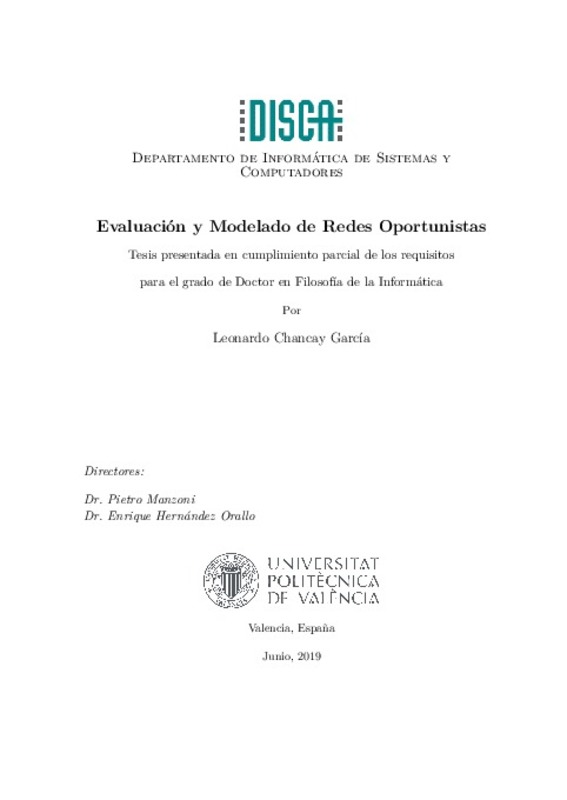Livadariu, I., Elmokashfi, A., & Dhamdhere, A. (2017). On IPv4 transfer markets: Analyzing reported transfers and inferring transfers in the wild. Computer Communications, 111, 105-119. doi:10.1016/j.comcom.2017.07.012
Dawadi, B. R., Rawat, D. B., & Joshi, S. R. (2019). Software Defined IPv6 Network: A New Paradigm for Future Networking. Journal of the Institute of Engineering, 15(2), 1-13. doi:10.3126/jie.v15i2.27636
Rizvi, S. N., Raumer, D., Wohlfart, F., & Carle, G. (2015). Towards carrier grade SDNs. Computer Networks, 92, 218-226. doi:10.1016/j.comnet.2015.09.029
[+]
Livadariu, I., Elmokashfi, A., & Dhamdhere, A. (2017). On IPv4 transfer markets: Analyzing reported transfers and inferring transfers in the wild. Computer Communications, 111, 105-119. doi:10.1016/j.comcom.2017.07.012
Dawadi, B. R., Rawat, D. B., & Joshi, S. R. (2019). Software Defined IPv6 Network: A New Paradigm for Future Networking. Journal of the Institute of Engineering, 15(2), 1-13. doi:10.3126/jie.v15i2.27636
Rizvi, S. N., Raumer, D., Wohlfart, F., & Carle, G. (2015). Towards carrier grade SDNs. Computer Networks, 92, 218-226. doi:10.1016/j.comnet.2015.09.029
Sezer, S., Scott-Hayward, S., Chouhan, P., Fraser, B., Lake, D., Finnegan, J., … Rao, N. (2013). Are we ready for SDN? Implementation challenges for software-defined networks. IEEE Communications Magazine, 51(7), 36-43. doi:10.1109/mcom.2013.6553676
ONF TR‐506.SDN migration considerations and use cases.;2014.https://www.opennetworking.org/wp-content/uploads/2014/10/sb-sdn-migration-use-cases.pdf.
Raza, M. H., Sivakumar, S. C., Nafarieh, A., & Robertson, B. (2014). A Comparison of Software Defined Network (SDN) Implementation Strategies. Procedia Computer Science, 32, 1050-1055. doi:10.1016/j.procs.2014.05.532
Wu, P., Cui, Y., Wu, J., Liu, J., & Metz, C. (2013). Transition from IPv4 to IPv6: A State-of-the-Art Survey. IEEE Communications Surveys & Tutorials, 15(3), 1407-1424. doi:10.1109/surv.2012.110112.00200
Contreras, L. M., Doolan, P., Lønsethagen, H., & López, D. R. (2015). Operational, organizational and business challenges for network operators in the context of SDN and NFV. Computer Networks, 92, 211-217. doi:10.1016/j.comnet.2015.07.016
Sandhya, Sinha, Y., & Haribabu, K. (2017). A survey: Hybrid SDN. Journal of Network and Computer Applications, 100, 35-55. doi:10.1016/j.jnca.2017.10.003
ON.LAB.Driving SDN adoption in service provider networks.;2014.http://onosproject.org/wp-content/uploads/2014/11/Whitepaper-Service-Provider-SDN-final.pdf.
SANDVINE. Carrier grade NAT: Mitigate IPv4 address exhaustion while maintaining network visibility.https://www.sandvine.com/hubfs/Procera_Live_Site_Files/PDF_Live_Site/Solutions_brief/SB_CGNAT.pdf. Published2018. .
F5. Carrier‐grade NAT (CGNAT) for service providers.https://www.f5.com/services/resources/use-cases/carrier-grade-nat-for-service-providers. Accessed September 20 2019.
Trinh, T. A., Gyarmati, L., & Sallai, G. (2010). Migrating to IPv6: A game-theoretic perspective. IEEE Local Computer Network Conference. doi:10.1109/lcn.2010.5735739
Nikkhah, M. (2016). Maintaining the progress of IPv6 adoption. Computer Networks, 102, 50-69. doi:10.1016/j.comnet.2016.02.027
Hu, T., Yi, P., Zhang, J., & Lan, J. (2018). A distributed decision mechanism for controller load balancing based on switch migration in SDN. China Communications, 15(10), 129-142. doi:10.1109/cc.2018.8485475
TaoP YingC SunZ TanS WangP SunZ.The controller placement of software‐defined networks based on minimum delay and load balancing. In:2018 IEEE 16th Intl Conf on Dependable Autonomic and Secure Computing 16th Intl Conf on Pervasive Intelligence and Computing 4th Intl Conf on Big Data Intelligence and Computing and Cyber Science and Technology Congress (DASC/PiCom/DataCom/CyberSciTech).;2018:310‐313.
Wang, K.-Y., Kao, S.-J., & Kao, M.-T. (2018). An efficient load adjustment for balancing multiple controllers in reliable SDN systems. 2018 IEEE International Conference on Applied System Invention (ICASI). doi:10.1109/icasi.2018.8394323
Xu, H., Li, X.-Y., Huang, L., Deng, H., Huang, H., & Wang, H. (2017). Incremental Deployment and Throughput Maximization Routing for a Hybrid SDN. IEEE/ACM Transactions on Networking, 25(3), 1861-1875. doi:10.1109/tnet.2017.2657643
Khorramizadeh, M., & Ahmadi, V. (2018). Capacity and load-aware software-defined network controller placement in heterogeneous environments. Computer Communications, 129, 226-247. doi:10.1016/j.comcom.2018.07.037
LanW LiF LiuX QiuY.A dynamic load balancing mechanism for distributed controllers in software‐defined networking. In:2018 10th International Conference on Measuring Technology and Mechatronics Automation (ICMTMA).;2018:259‐262.
TR‐506 O.SDN Migration considerations and use cases.;2014.
Kobayashi, M., Seetharaman, S., Parulkar, G., Appenzeller, G., Little, J., van Reijendam, J., … McKeown, N. (2014). Maturing of OpenFlow and Software-defined Networking through deployments. Computer Networks, 61, 151-175. doi:10.1016/j.bjp.2013.10.011
BabikerH NikolovaI ChittimaneniKK.Deploying IPv6 in the Google Enterprise Network. Lessons learned. In:Proceedings of the 25th International Conference on Large Installation System Administration.;2011:10.
APNIC. IPv6 capability measurement.https://stats.labs.apnic.net/ipv6. Accessed February 15 2020.
Google Incl. IPv6 user access status.https://www.google.com/intl/en/ipv6/statistics.html. Accessed February 16 2020.
Abdullah, S. A. (2019). SEUI-64, bits an IPv6 addressing strategy to mitigate reconnaissance attacks. Engineering Science and Technology, an International Journal, 22(2), 667-672. doi:10.1016/j.jestch.2018.11.012
KreutzD RamosF VerissimoP RothenbergCE AzodolmolkyS UhligS.Software‐defined networking: A comprehensive survey.arXiv Prepr arXiv14060440.2014.
DawadiBR RawatDB JoshiSR KeitschMM.Recommendations for energy efficient SoDIP6 network deployment at the early stage rural ICT expansion of Nepal. In: 2019International Conference on Computing Networking and Communications ICNC 2019.;2019.https://doi.org/10.1109/ICCNC.2019.8685567
WintherM.Tier 1 isps: what they are and why they are important. IDC White Pap2006:1‐13.
DawadiBR RawatDB JoshiSR.Evolutionary dynamics of service provider legacy network migration to software defined IPv6 network. In:International Conference on Computing and Information Technology;2019:245‐257.
BriainDÓ DenieffeD KavanaghY OkelloD.A proposed architecture for distributed Internet eXchange Points in developing countries. In:2018 IST‐Africa Week Conference (IST‐Africa).;2018:Page‐‐1.
ChatzisN SmaragdakisG FeldmannA.On the importance of Internet eXchange Points for today's Internet ecosystem.arXiv Prepr arXiv13075264.2013.
RyanPS GersonJ.A primer on Internet exchange points for policymakers and non‐engineers.Available SSRN 2128103.2012.
BogineniK.Introducing ONOS: A SDN network operating system for service providers.White Pap.2014.
Karakus, M., & Durresi, A. (2018). Economic Viability of Software Defined Networking (SDN). Computer Networks, 135, 81-95. doi:10.1016/j.comnet.2018.02.015
Shakkottai, S., & Srikant, R. (2006). Economics of Network Pricing With Multiple ISPs. IEEE/ACM Transactions on Networking, 14(6), 1233-1245. doi:10.1109/tnet.2006.886393
Weiss, M. B., & Shin, S. (2002). Internet Interconnection Economic Model and its Analysis: Peering and Settlement. Communication Systems, 215-231. doi:10.1007/978-0-387-35600-6_10
De Souza, E. P., Ferreira, E. M., & Neves, A. G. M. (2018). Fixation probabilities for the Moran process in evolutionary games with two strategies: graph shapes and large population asymptotics. Journal of Mathematical Biology, 78(4), 1033-1065. doi:10.1007/s00285-018-1300-4
Klimek, P., Thurner, S., & Hanel, R. (2010). Evolutionary dynamics from a variational principle. Physical Review E, 82(1). doi:10.1103/physreve.82.011901
[-]







![[Cerrado]](/themes/UPV/images/candado.png)




